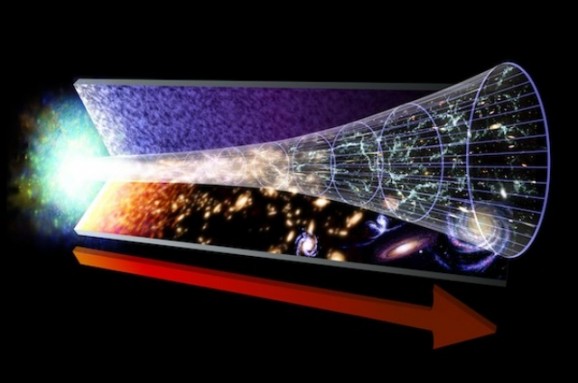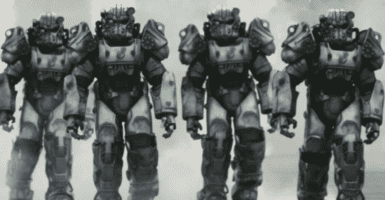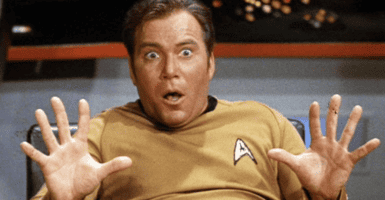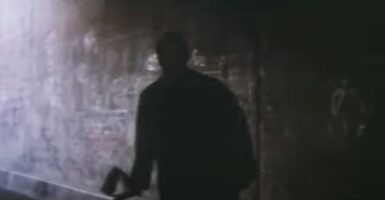New Research Suggests There May Be A Parallel Universe In Which Time Moves “Backward”
This article is more than 2 years old
 One of the most brain- and reality-bending theories out there involves the multiverse — a hypothetical parallel universe, or set of countless universes, that run alongside our universe and reality. Some people think there’s a parallel universe for every possible decision — in one, you decided not to take that job in New York City; in the other, you work down the block from the Empire State Building. Most people who believe in the multiverse believe that these various universes have a relationship with one another. While scientists such as Stephen Hawking and Neil deGrasse Tyson espouse the idea, some physicists believe it’s more of a philosophical idea than a scientific one. Recently, a team of scientists from the UK and Canada published a paper in the Physical Review Letters that suggests some interesting ideas about time — namely, that it doesn’t necessarily move in the direction we think it does (more or less known as forward). The researchers also suggest that our universe may be one of two created by the Big Bang.
One of the most brain- and reality-bending theories out there involves the multiverse — a hypothetical parallel universe, or set of countless universes, that run alongside our universe and reality. Some people think there’s a parallel universe for every possible decision — in one, you decided not to take that job in New York City; in the other, you work down the block from the Empire State Building. Most people who believe in the multiverse believe that these various universes have a relationship with one another. While scientists such as Stephen Hawking and Neil deGrasse Tyson espouse the idea, some physicists believe it’s more of a philosophical idea than a scientific one. Recently, a team of scientists from the UK and Canada published a paper in the Physical Review Letters that suggests some interesting ideas about time — namely, that it doesn’t necessarily move in the direction we think it does (more or less known as forward). The researchers also suggest that our universe may be one of two created by the Big Bang.
For the past century, physicists have used the idea of an “arrow of time” that describes time’s movement — one way, forward from the past to the present and on into the future. Most physicists also believe that the direction time moves is toward entropy or disorder, gradually resulting in things falling apart. Given that belief, it makes sense then that scientists would also believe that in the beginning, our universe must have been highly ordered, with little entropy.
Around the same time the arrow of time idea emerged, an Austrian physicist named Ludwig Boltzmann posited that our universal is an anomaly — that it’s a statistical fluctuation from an ageless universe that remains in a high-entropy state. Boltzmann hypothesized that, because a state of high-entropy achieves an equilibrium among all matter, our universe was an exception to the rule in its long march toward that equilibrium.
That’s where the researchers come in with a different theory — an arrow of time based on gravity, not thermodynamics: “all the known laws of physics look exactly the same whichever way time runs,” they argue. So they set about designing a computer simulation of 1,000 particles subjected to gravity. The simulation showed them that the particles tend to evolve into a random, low-complexity state, much as Boltzmann predicted. But from there, the particles moved outward in two opposite arrows of time. One of the researchers likened the Big Bang to a swarm of bees. If the bees “[broke] up in either direction, then you could say there are two arrows of time, pointing in opposite directions from the swarm of bees.”
So, what does that all mean? Well, after the Big Bang, “there would be essentially two universes,” both of which had a high-entropy past known as a “central state,”, but which would seem to move in opposite directions from that state when it comes to the arrow of time. The study is by no means conclusive, but does raise some interesting points that could have resounding implications. Perhaps the Big Bang wasn’t actually the beginning of the universe, but rather a phrase in a universe that has no age or beginning. It’s also possible that, if gravity dictates the arrow of time, predictions and simulations based on that idea could reveal some new ideas about how the universe was made, what its structure is like, and why it continues to expand despite gravity’s pull. As we learned in Interstellar, gravity is pretty important. According to the researchers, “It takes systems that look extraordinarily disordered and makes them wonderfully ordered. And this is what has happened in our universe. We are realizing the ancient Greek dream of order out of chaos.”












